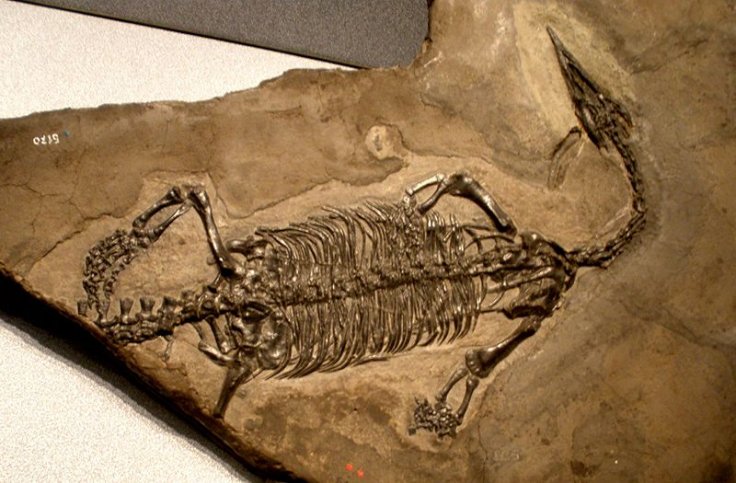A group of prehistoric marine reptiles called "Thalattosaurs" used to live on earth during the mid-late Triassic period. Some of these animals also grew more than four meters in length, including long and flattened tails which were used for underwater propulsion.
Now the scientists at the University of Alaska Fairbanks have identified a new species of thalattosaur. The researchers stated that the new variety is a marine reptile that used to live over 200 million years ago.
The new species of thalattosaurs
After finding the new species, the scientists named it as Gunakadeit joseeae. They said that it is the complete thalattosaur ever found in North America which has also given them an opportunity to look into the thalattosaurs' family tree.
As per the study, which was published in the journal Scientific Reports, Patrick Druckenmiller, the lead author and director at the University of Alaska Museum of the North said that they found the fossil evidence in Southeast Alaska in 2011 and wanted to check its connection with the thalattosaurs' family tree.
Located in the inter-tidal zone
When the fossil was found it was located in the rocks in the intertidal zone. The discovery site is actually underwater, but when low tides hit, people head to the beaches to explore. Jim Baichtal, a geologist with the US Forest Service's Tongass National Forest, who visited the location during the low time on May 18, 2011 recognized it as a fossilized skeleton intact.
But before finding this fossil it had been two decades since scientists had thoroughly updated thalattosaur interrelationships. Druckenmiller said that the process of re-examining the prehistoric animal's ancient relatives includes the analysis of dozens of details of detailed anatomical features from fossil specimens worldwide and then using computer systems to analyze the information to check whether such different species are related or not.

New finding by University of Alaska Fairbanks
It should be noted that along with Druckenmiller other Neil Kelley from Vanderbilt University who was another collaborator of the study were surprised to see the connection of the Gunakadeit with the family tree of thalattosaurs. Druckenmiller stated that it is a relatively primitive type of thalattosaur that survived late into the existence of the group.
As per Kelley, "Thalattosaurs were among the first groups of land-dwelling reptiles to readapt to life in the ocean. They thrived for tens of millions of years, but their fossils are relatively rare so this new specimen helps fill an important gap in the story of their evolution and eventual extinction."
Extremely pointed snout
When the researchers detected the fossil and sent a picture to Druckenmiller, a month later, the tides were forecast to be almost that low, -3.1 feet, for two days. After collecting the sample, a fossil preparation specialist worked in two-week stints over the course of several years to get the fossil cleaned up and ready for study.
Later when the researchers saw the skull of the fossil, they understood that it was something new as it showed an extremely pointed snout which was likely evolution adaption for the shallow marine environment where it lived.
As per Druckenmiller, it is possible that this ancient animal was poking its pointy schnoz into cracks and crevices in coral reefs and feeding on soft-bodied critters. He also added, "We think these animals were highly specialized to feed in the shallow water environments, but when the sea levels dropped and food sources changed, they had nowhere to go."









